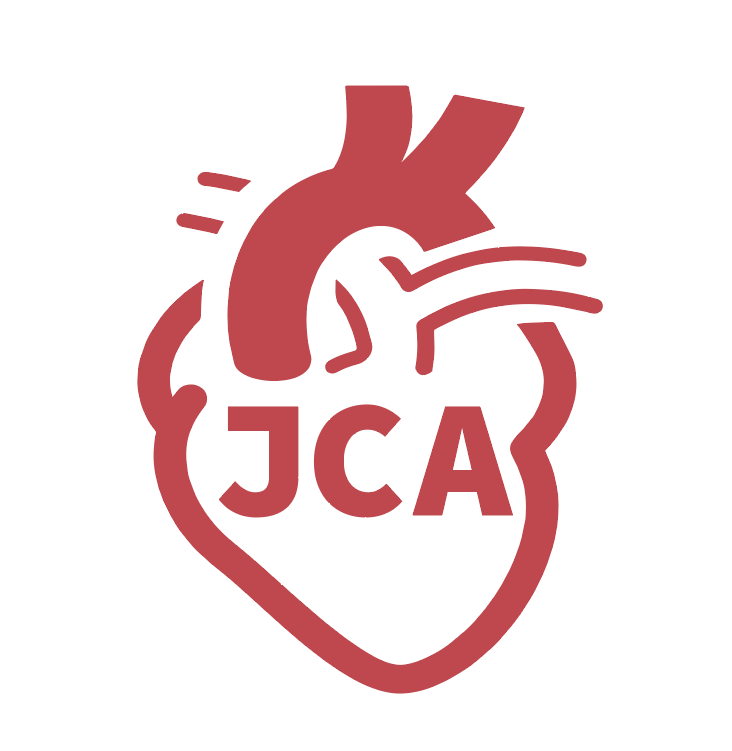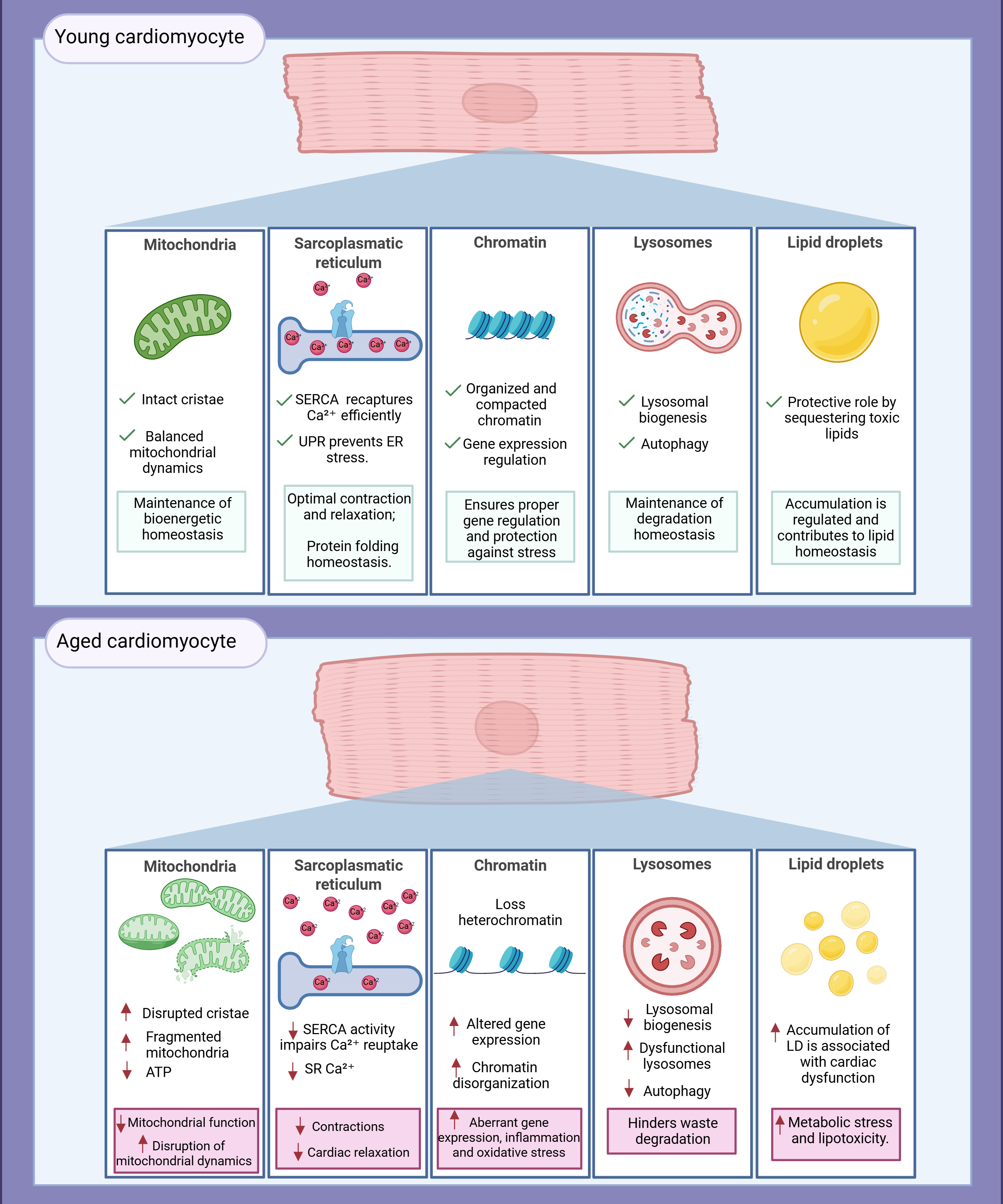fig1
Figure 1. Organelle alterations in cardiomyocytes during aging. In young cardiomyocytes, mitochondria maintain efficient ATP production and redox homeostasis; lysosomes support effective autophagy; the SR ensures proper Ca2+ cycling; lipid droplets (LD) prevent lipotoxicity; and chromatin is preserved with regulated gene expression. In contrast, aged cardiomyocytes exhibit fragmented and dysfunctional mitochondria with increased reactive oxygen species (ROS) production and reduced bioenergetics; lysosomal activity is impaired, compromising autophagic clearance; SR Ca2+ reuptake becomes defective; LDs accumulate abnormally; and chromatin structure is altered, with loss of heterochromatin and dysregulated transcription. These alterations collectively impair cardiomyocyte function and contribute to age-related cardiac decline.









